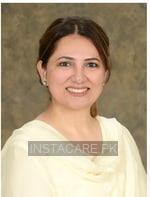Plague - Symptoms, Risk factors and Treatment
Last Updated On Tuesday, December 16, 2025
Plague in Urdu
طاعون جسے کبھی کالی موت کہا جاتا تھا، ایک مہلک بیماری ہے۔ آپ سوچ سکتے ہیں کہ یہ اب موجود نہیں ہے۔ لیکن یہ کرتا ہے اور خطرناک ہے۔ تاہم، اب یہ قابل علاج ہے۔ طاعون ایک جراثیمی بیماری ہے جو ان پسووں کے ذریعے پھیلتی ہے جو چوہوں کو کھاتے ہیں، جو یرسینیا پیسٹس کے نام سے جانے والے جاندار سے متاثر ہوئے ہیں۔
آج کل یہ ایک سال میں 5000 سے کم لوگوں میں ہوتا ہے۔ اگر صحیح وقت پر علاج نہ کیا جائے تو یہ جان لیوا ثابت ہو سکتا ہے۔ یہ بغلوں، گردن اور نالی کے علاقے میں نرم اور سوجن لمف نوڈس جیسی پیچیدگیوں کا باعث بن سکتا ہے جسے buboes کہتے ہیں۔ طاعون کی ایک بہت ہی نایاب شکل، جو مہلک ہے پھیپھڑوں کو متاثر کرتی ہے- کھانسی کی بوندوں کے ذریعے ایک شخص سے دوسرے میں پھیل سکتی ہے۔
Plague in English
The plague, once called the black death, is a deadly disease. You may think it does not exist anymore. But it does and is dangerous. However, it is treatable now. Plague is a bacterial disease that is transmitted through fleas that feed on rodents, who have been infected with the organism known as Yersinia pestis.
Nowadays it occurs in less than 5000 people in a year. If not treated at right time, it can become deadly. It can lead to complications like tender and swollen lymph nodes in the armpits, neck, and groin area- called buboes. A very rare form of plague, that is deadly affects the lungs- can spread from person to person through cough droplets.
Symptoms
The symptoms of plague vary according to the area it affects. It can be divided into three types;
- Bubonic plague
- Septicemic plague
- Pneumonic plague
Bubonic plague
The most common type of plague is a bubonic plague that forms buboes- tender and swollen lymph nodes in the armpits, neck, and groin area. They often develop in the first week of getting infected. Buboes may have the following characteristics;
- They can be situated in the neck, groin, or armpit
- They are tender and firm upon touch
- They may have a size that of chicken egg
The symptoms of bubonic plague are;
- Sudden onset of fever and chills
- Muscle aches
- Headache
- Fatigue or malaise
Septicemic plague
It is the type of plague that occurs when bacteria invade your bloodstream. The signs and symptoms of septicemic plague are;
- Fever
- Chills
- Extreme weakness
- Abdominal pain
- Diarrhea
- Vomiting
- Bleeding from mouth
- Bleeding from nose or rectum
- Bleeding from under your skin
Shock - a condition in which blood pressure falls, due to which blood supply to the organs is affected, leading to organ failure and damage.
Gangrene - Blackening and death of tissue in your extremities, most commonly- fingers, toes, and nose
Pneumonic plague
It is the type of plague that is rare but deadliest because it affects the lungs and spreads from person to person via cough droplets. The signs and symptoms of pneumonic plague are;
- Cough, with bloody mucus (sputum)
- Difficulty breathing
- Nausea and vomiting
- Chest pain
- High fever
- Headache
- Weakness
Within two days of infection, pneumonic plague can lead to respiratory failure and shock. It needs to be readily treated with antibiotics. If left untreated, it progresses rapidly, causing death eventually.
Causes
The bacteria that causes plague is Yersinia Pestis. It is transmitted to human beings through fleas who have previously fed on infected animals like;
- Rats
- Mice
- Chipmunks
- Voles
- Squirrels
- Rabbits
- Prairie dogs
Complications
Plague, if not treated by antibiotics at the right time, can lead to the following complications;
Meningitis- inflammation of meninges- layers that surround and protect the brain and the spinal cord.
Gangrene- blackening and death of tissue in your extremities, most commonly- fingers, toes, and nose
Death- people who fail to receive antibiotics at the right time may die of septicemia. However, most people who receive antibiotic treatment at the right time may recover soon.
Preventions
To prevent Plague, you must prevent the entry of any insects and mice into your home.
To prevent the entrance of mice and rodents into your home, you can practice the following tips;
Block all the accesses into your house. A little opening can even serve as an entrance for mice. They can squeeze themselves up to 6 millimeters. Therefore you need to make sure that you close all the inlets properly.
Keep food inside the refrigerator or in covered lids. Do not let the food remain open and unprotected outside as they may get attracted to it.
Clear junk, grass, and brushes far away from the building, and wear a mask while doing that.
Use insect repellants to protect you and yourself from insects.
Ensure that no fleas come near your pets.
Conclusion
Plague is a bacterial disease that is transmitted through fleas that feed on rodents, who have been infected with the organism known as Yersinia pestis. To treat it, antibiotics should be given readily.
Frequently Asked Questions
Plague meaning in urdu is Taoon طاعون .
Plague is a serious bacterial infection that's transmitted primarily by fleas. Symptoms vary depending on the type of plague, but may include sudden onset of fever and chills, headache, fatigue, muscle aches, swollen and tender lymph nodes, abdominal pain, diarrhea, nausea and vomiting, bleeding from the mouth, nose, or rectum, shock, and difficulty breathing. In some cases, blackening and death of tissue (gangrene) in the extremities may occur.
The plague bacteria, Yersinia pestis, is transmitted to humans through the bites of fleas that have previously fed on infected animals such as rats, mice, squirrels, rabbits, prairie dogs, and chipmunks. The bacteria can also enter your body if a break in your skin comes into contact with an infected animal's blood. Domestic cats and dogs can become infected with plague from flea bites or from eating infected rodents. Pneumonic plague, which affects the lungs, is spread by inhaling infectious droplets coughed into the air by a sick animal or person.








